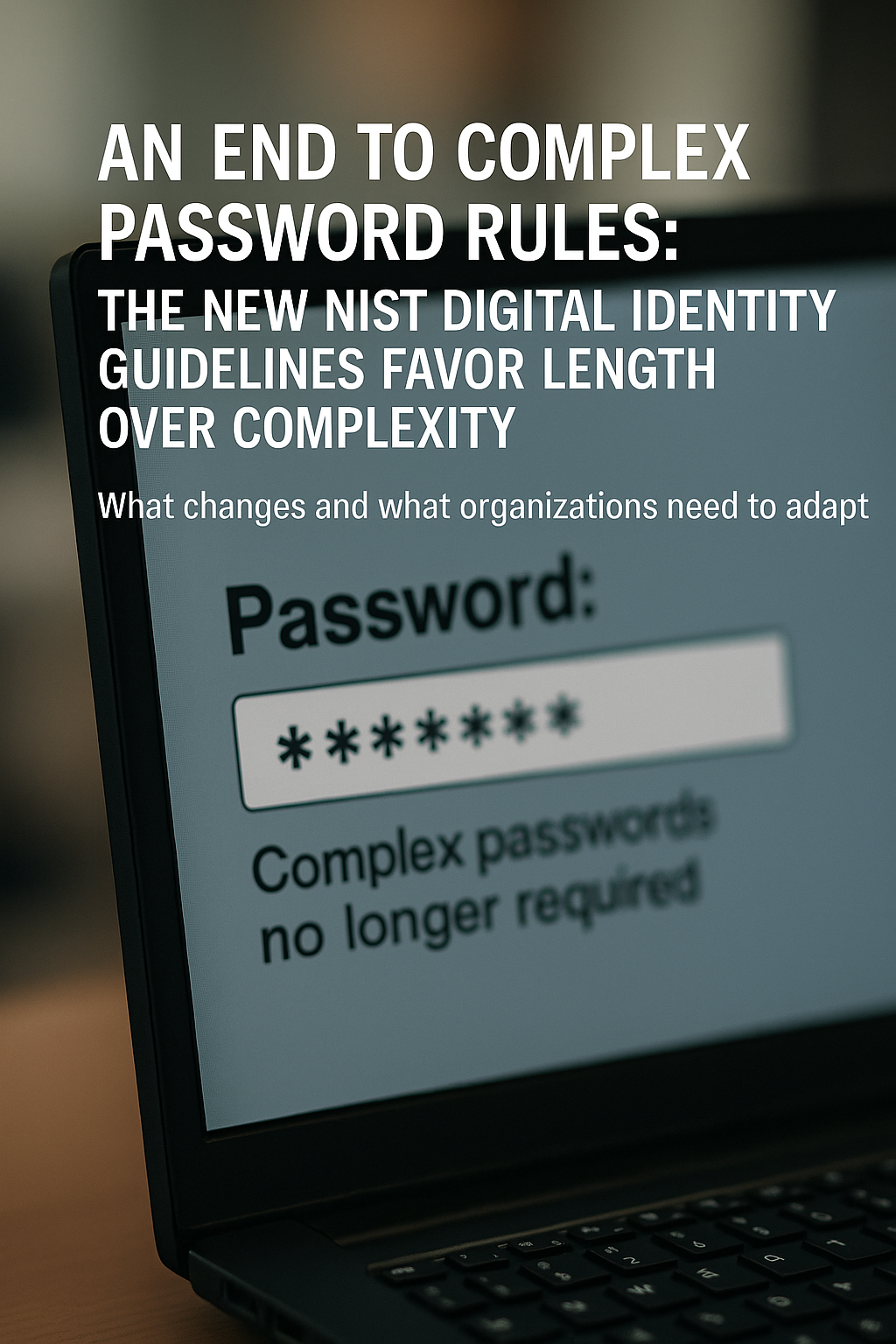An end to complex password rules: the new NIST Digital Identity Guidelines favor length over complexity. What changes and what organizations need to adapt.
The end of old password rules
The most dramatic change affects password requirements and breaks with everything IT administrators have long regarded as best practice. While regular password changes every 60–90 days and complex composition rules were considered the gold standard, the new guidelines explicitly disallow those practices.
The new paradigm calls for passwords of at least 15 characters for single-factor authentication and at least 8 characters when multi-factor authentication is in use. Systems should support up to 64 characters and accept all printable ASCII and Unicode characters. At the same time, composition rules that mandate different character types are completely prohibited.
The rationale is research-based: a 15-character password made of simple words like “correct horse battery staple mountain” is exponentially harder to crack than “P@ssw0rd123!” while also being easier to remember.
Science instead of tradition
Forced complexity paradoxically leads to weaker passwords. Users fall into predictable patterns: a capital letter at the start, numbers at the end, common substitutions like “@” for “a”. Those patterns make passwords predictable for attackers.
Regular password rotations are now required only when there is concrete suspicion of compromise. Frequent changes encourage weaker passwords or predictable variations such as “SecurePassword2024” to “SecurePassword2025”.
Password hints and security questions are fully prohibited because they are often compromised through social engineering.
New security measures
The guidelines introduce a mandatory blocklist: all new passwords must be checked against databases of compromised passwords, dictionary terms, and context-specific terms.
At the same time, support for password managers and auto-fill functionality is explicitly required. Systems should offer password reveal during entry, tolerance for typographical errors, and mobile input aids.
Challenges for manufacturers
For developers, the guidelines mean fundamental changes. Existing password policy engines must be revised: remove composition rules, implement length validation, and integrate blocklist databases.
User interfaces need password-reveal features, must remove copy-paste restrictions, and must support very long passwords. Back-end systems require secure hashing algorithms, rate-limiting mechanisms, and Unicode support.
Legacy systems face particular challenges. Enterprise identity management systems, Active Directory policies, and compliance software are built around the old paradigms and require extensive modifications. At the same time, new market opportunities emerge for NIST-compliant password managers and authentication services.
Other important changes
Revision 4 brings the integration of syncable authenticators such as passkeys, new controls against deepfakes, metrics for continuous assessment, and consideration of subscriber-controlled wallets.
Implementation challenges
Implementation requires comprehensive user re-education. Decades of habit must be changed — many people need to learn that length matters more than complexity.
Compliance conflicts will arise because many industry standards still mandate old password rules. Organizations will find themselves balancing NIST conformity with regulatory requirements.
Technical debt accumulated under years of outdated standards requires substantial investment to modernize authentication infrastructure.
Conclusion
The NIST Digital Identity Guidelines Revision 4 mark the shift from traditional to scientifically grounded, user-friendly security practices. Organizations can improve their security posture while increasing usability.
Manufacturers face new market opportunities alongside the need to modernize products. The era of complex, short passwords that are changed regularly is over — welcome to the age of scientifically based password security.
The full guidelines are available under NIST SP 800-63 Revision 4 with the volumes Identity Proofing (Volume A), Authentication (Volume B) and Federation (Volume C).

